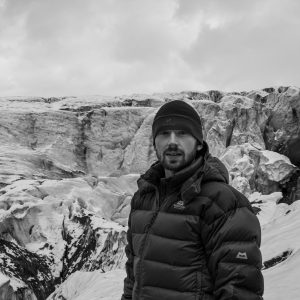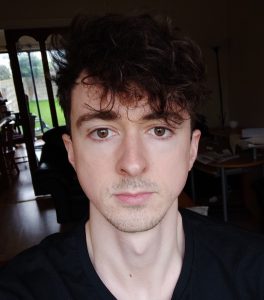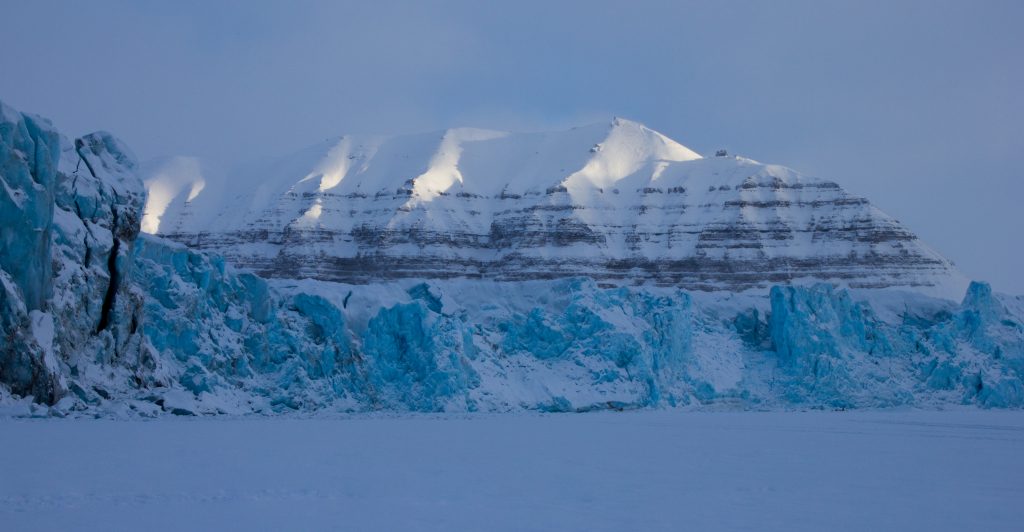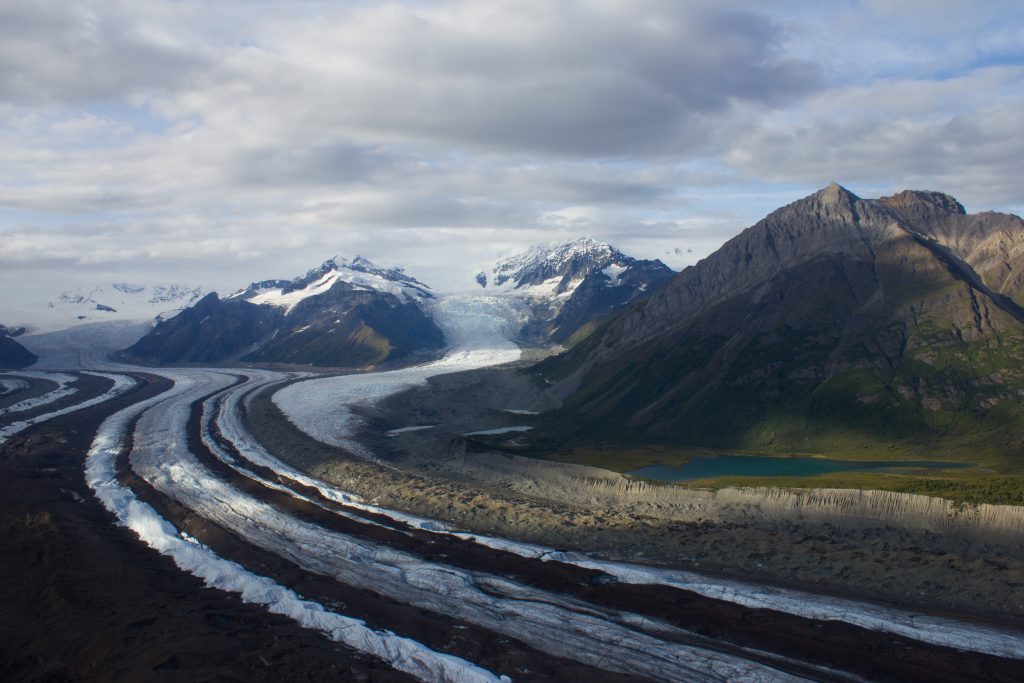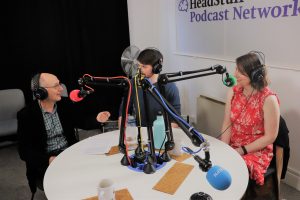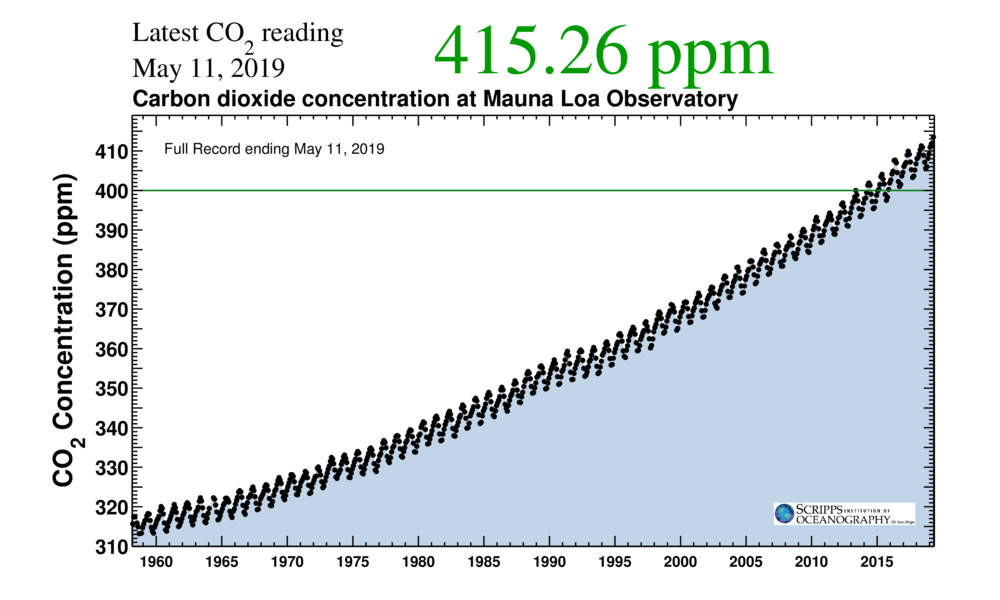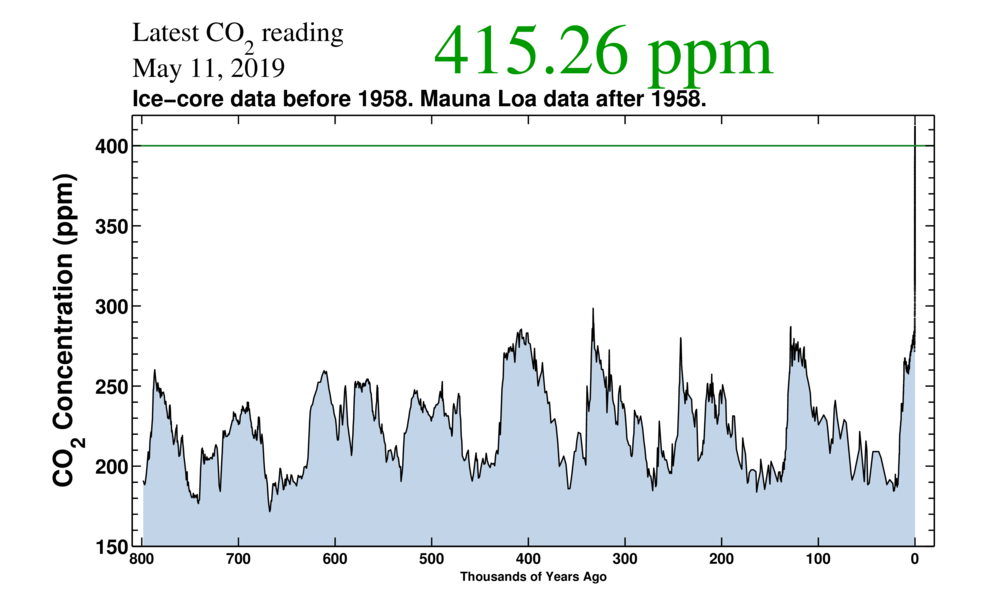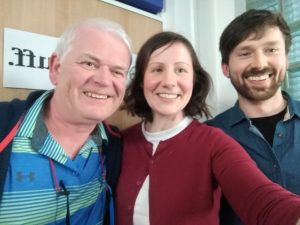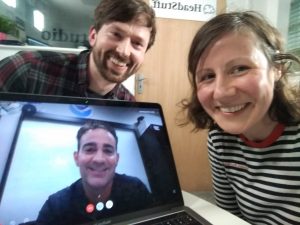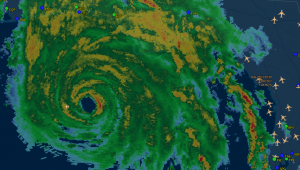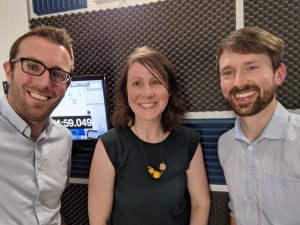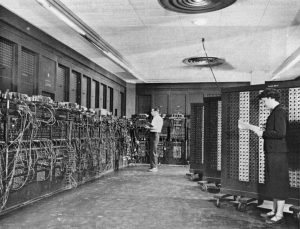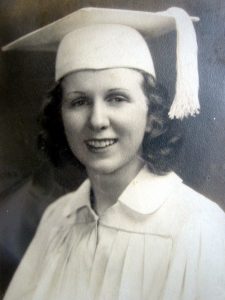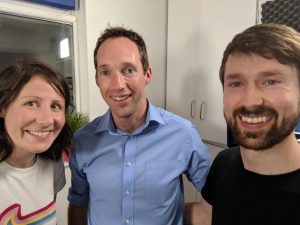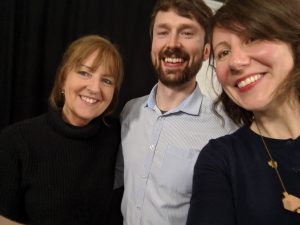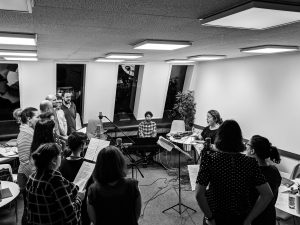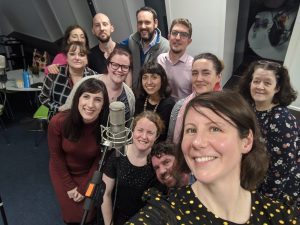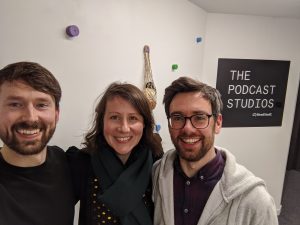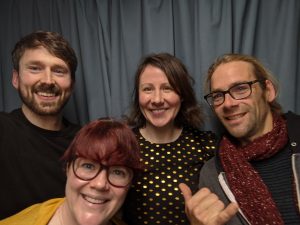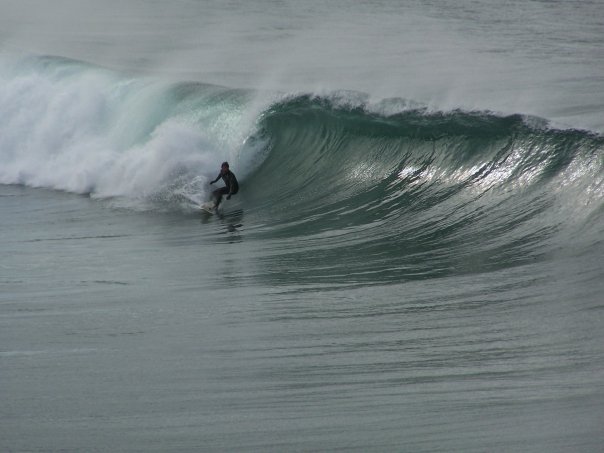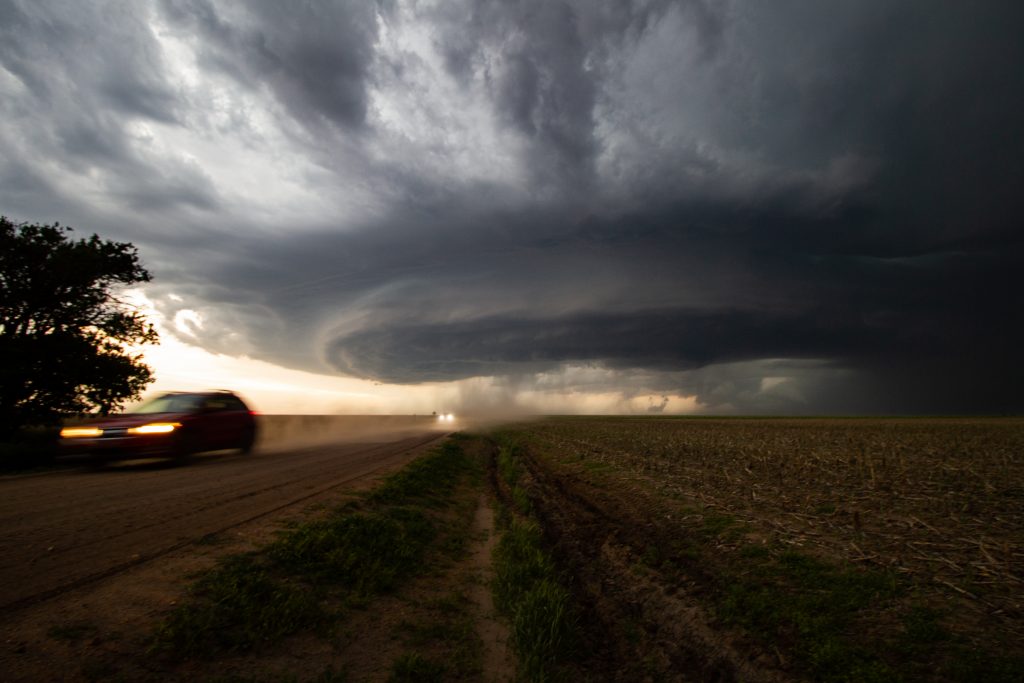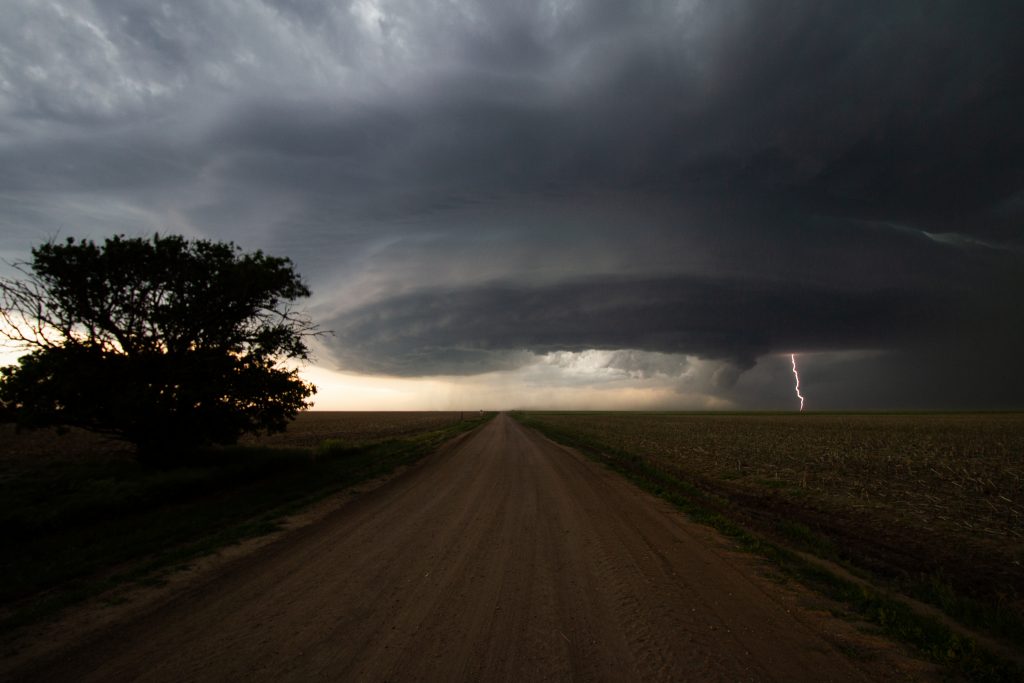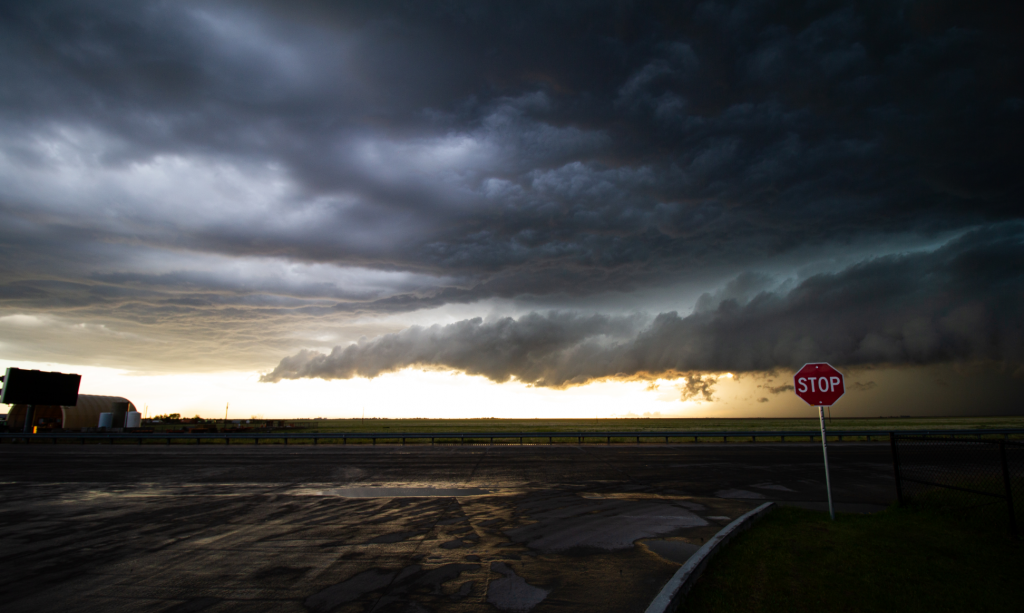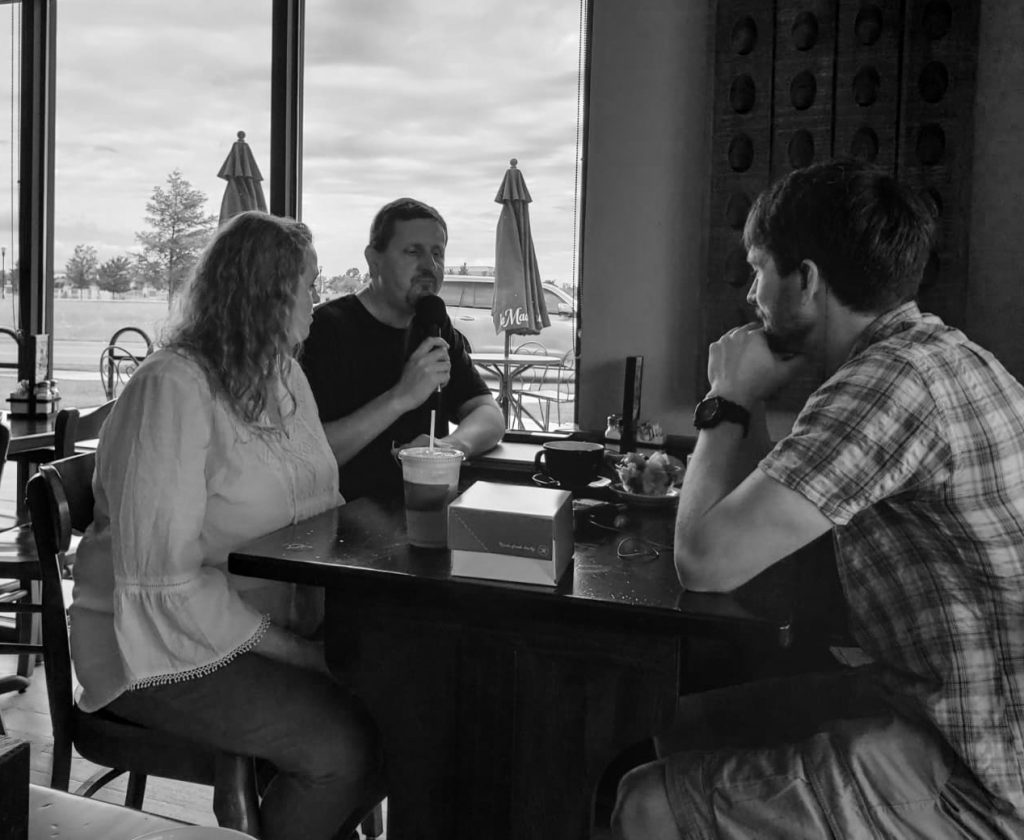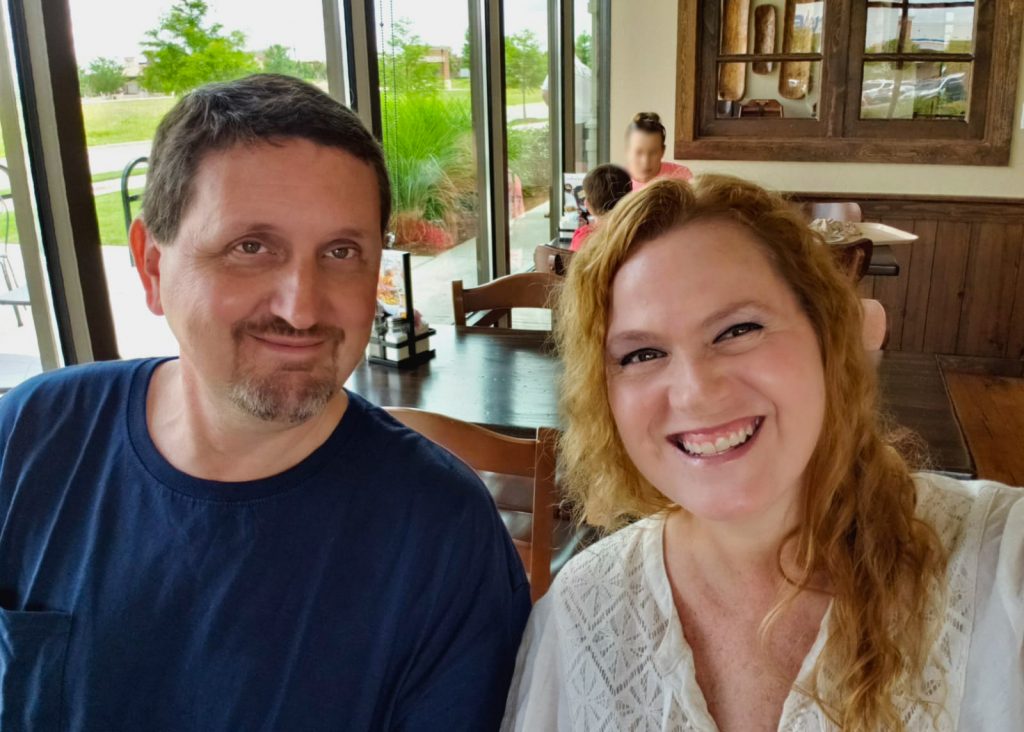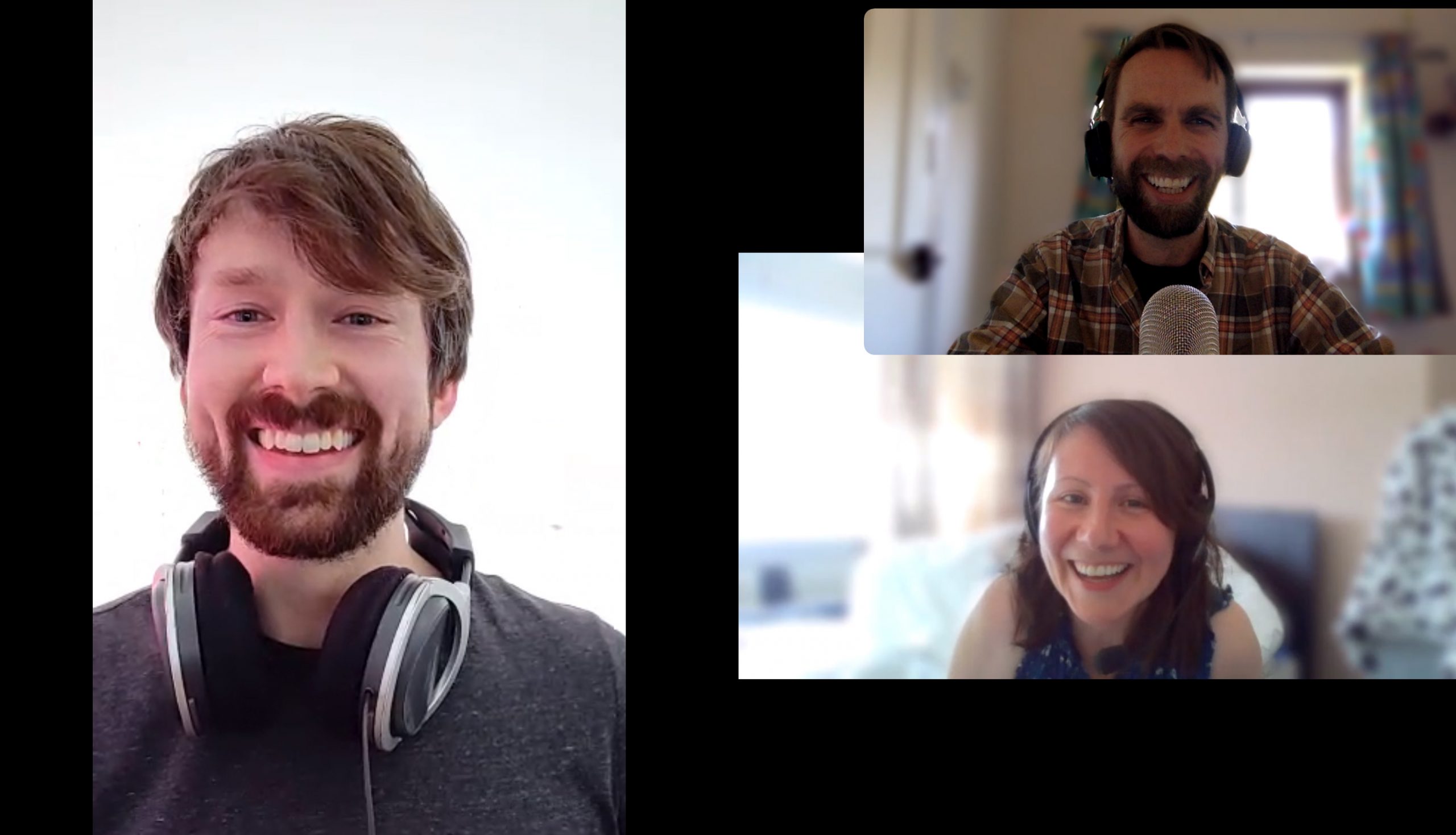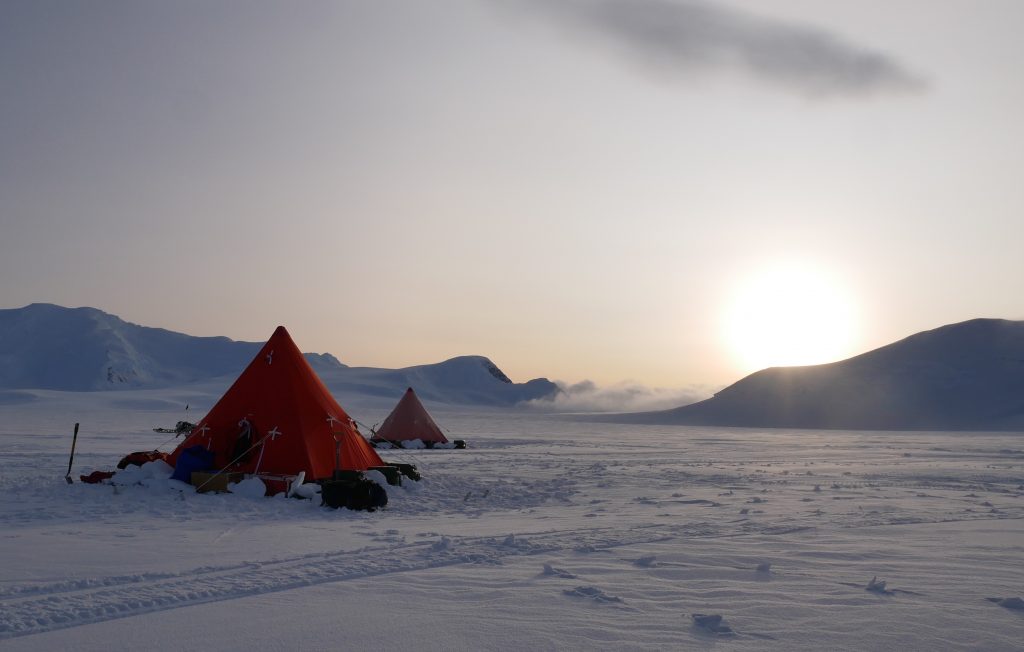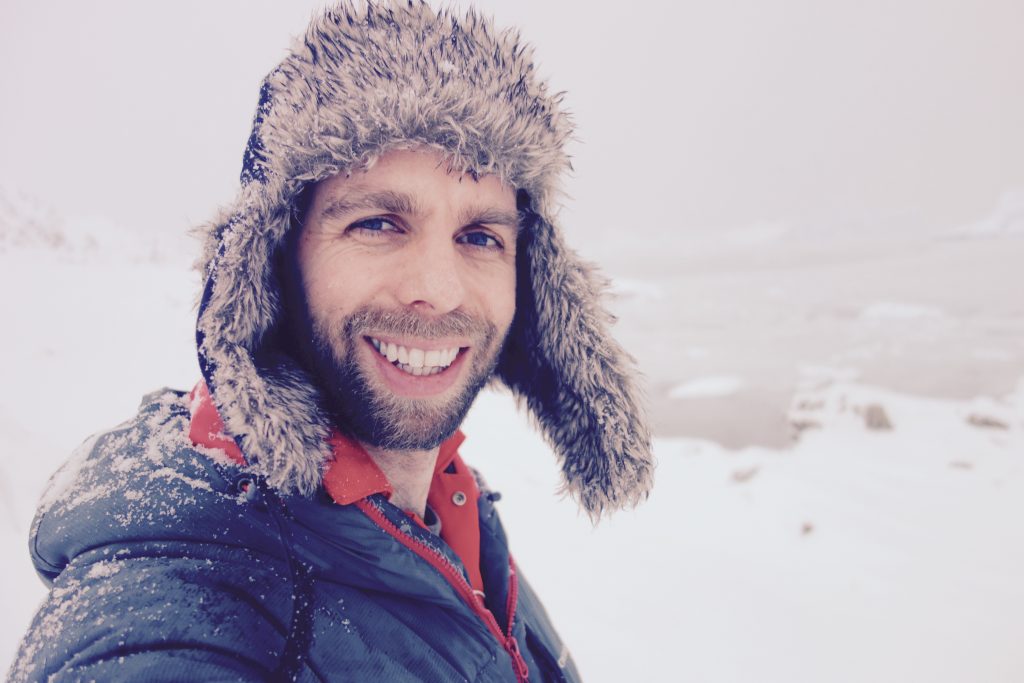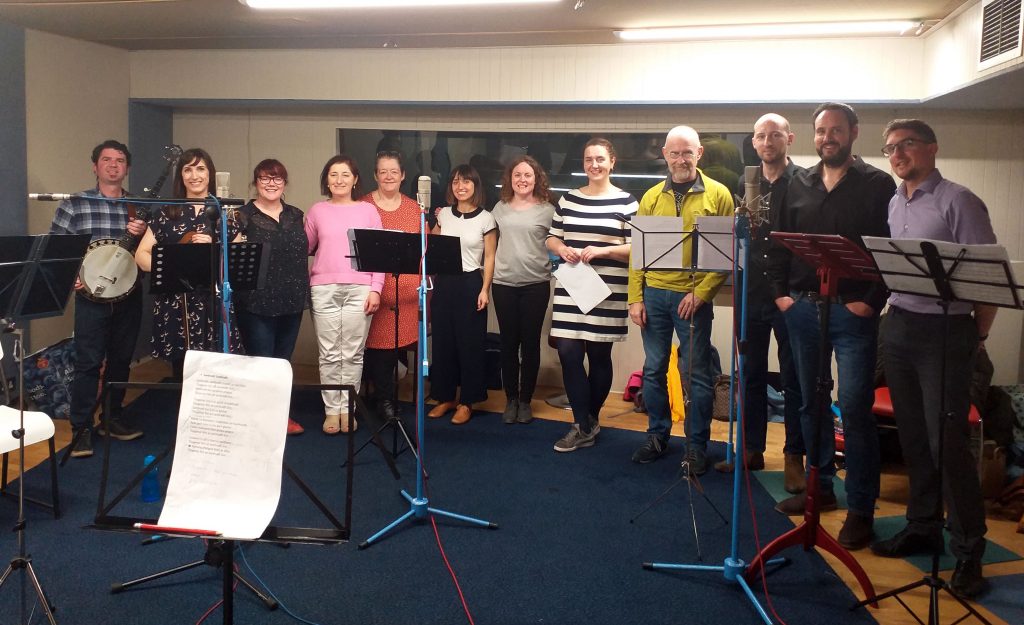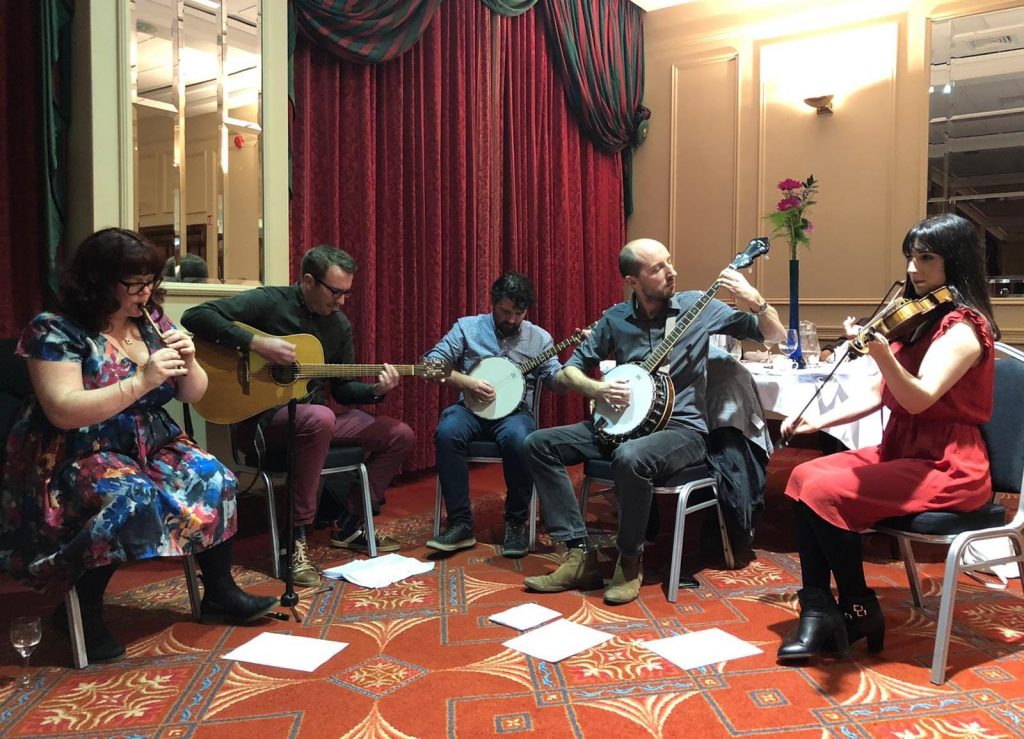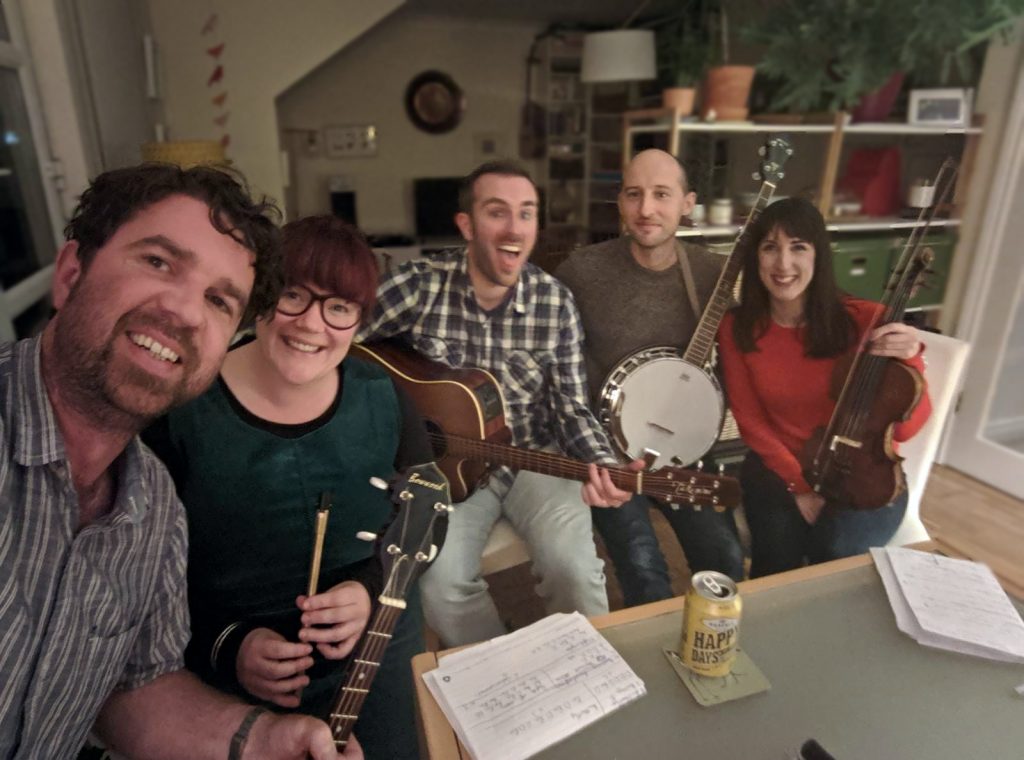Few things impact us on a daily basis like the weather; how we work and travel, how we exercise and socialise, how we grow our food, our safety and even how we feel. Our weather and climate are changing, and a better understanding of our atmosphere can help us navigate these changes.
The Met Éireann Podcast explores all things weather and climate, the mysteries of our atmosphere and meets the people that work to understand them. Dr Noel Fitzpatrick is joined by new guests each episode to help uncover the science and its wide-ranging impacts. For more, see met.ie/podcast.
So whether you are a new or existing listener- be sure to subscribe to The Met Éireann Podcast series wherever you get your podcasts.
We also have an Irish version of this podcast – Podchraoladh Met Éireann
Click on the player below to listen to the latest episode and more.
You can contact the Podcast team at podcast@met.ie or use #MetEireannPodcast on Twitter
Season 4 Episode 10 – TRANSLATE
Rapid and effective action is required to help mitigate climate change and to help adapt to its impacts. With an ever-increasing number of climate studies showing evidence of ongoing changes and detailing future effects, it’s vital that policy makers and the public have access to clear and concise information.
In this month’s episode of the Met Éireann Podcast, we are exploring the TRANSLATE project; an initiative to provide a unified source of climate information and climate projections for Ireland. Noel is joined by Dr Claire Scannell, physicist and researcher with Met Éireann. Together, they discuss the future climate projections for Ireland, and how the TRANSLATE project can help decision makers to prepare for change and to take steps to avoid the worst impacts. You can find out more about the TRANSLATE project here:
Season 4 Episode 9 – Wildfires
Wildfires have occurred on our planet for millions of years, helping bring new growth and diversity to forests and ecosystems. Weather and climate play a central role in wildfire occurrence. Changes to our climate, however, and the effects of human activity, have impacted wildfire patterns, resulting in increased risk of major wildfire events like those seen this summer in Europe, North America and Asia.
In this episode, we are exploring wildfires, how they start, how they spread, how best to tackle and prevent them, and the role played by climate change. Noel first speaks with Dublin fire fighter and wildfire instructor Darren O’Connor on the challenges and science of tackling wildfires and the techniques used to manage the flames. Noel is then joined by Jennifer Baron, wildfire researcher at the University of British Columbia in Canada, to discuss the huge fires they’ve experienced in recent years and how human activity and climate change have impacted their patterns.
You can view Met Éireann’s Fire Weather Index, which is updated daily.
Season 4 Episode 8 – Saving Lives at Sea
The lifeboats of the RNLI have been saving lives in Irish and UK waters since 1824. Almost entirely run by volunteers, the RNLI have rescued over 144,000 lives since founded, often in very challenging conditions.
In this episode of the Met Éireann Podcast, Noel visits the Sligo Bay Lifeboat station and speaks with the crew on how they carry out their vital work and the impact that weather can have on their operations. Noel is first given a tour of the station by Operations Manager Willie Murphy, and then joins Helm Eithne Davis onboard for a detailed run-through of the boat itself. Noel then sits down with Willie, Eithne and RNLI water safety representative, Tim Doran, to learn more about how rescues are carried out, the training involved and how best to remain safe in or around water.
Season 4 Episode 7 – The Sun and Our Skin
What causes sunburn? How does UV radiation damage our skin? Can it cause ageing? Who’s most at risk from skin cancer? How does sunscreen work?
In this episode, Noel is joined by Dr Barbara McGrogan and Dr Triona McCarthy of the National Cancer Control Programme. Together they explore the role of sunlight and UV radiation in skin damage and skin cancer and how best to protect ourselves from the most adverse effects.
To learn more about UV damage and protecting your skin, check out: https://www.hse.ie/sunsmart/
Season 4 Episode 6 – Aurora and Space Weather
The aurora, or northern and southern Lights, can often be seen dancing in the night sky of our polar regions. But in recent months, they have been visible at much lower latitudes. What causes the aurora and why does its activity appear to be increasing?
In this episode of the Met Éireann Podcast, Noel is speaking with Dr Sophie Murray, space weather researcher and technical officer with the Dublin Institute for Advanced Studies. Together, they explore the aurora, solar winds, the role of the sun in space weather and the potential for more aurora sightings in the near future.
Crossover Episode with the ‘Basically… with Stefanie Preissner’ Podcast
We have a special crossover episode of the Met Éireann Podcast this month. Noel joins Stefanie Preissner on the Basically podcast for a fun, wide-ranging conversation covering everything from why Ireland gets the weather it does, how weather forecasting works, your chances of getting struck by lightning and what climate change has in store.
Season 4 Episode 4 – Weather Radar
Weather radar is one of the most useful tools available to meteorologists or anyone wondering if it is going to rain! From its early beginnings during World War Two, to the advanced equipment used today, weather radar provides vital information for forecasting, severe weather tracking and atmospheric research.
This month, Noel speaks with radar meteorologist, Sinéad Duffy. Sinéad talks us through how weather radar works, how it was discovered and improved over time and details some of the major upgrades coming soon to the Irish radar network.
Season 4 Episode 3 – Lift off: The launch of Europe’s new weather satellite
Guests: Dr. Lothar Schüller (EUMETSAT), Pierre Kokou (ESA)
Europe’s newest weather satellite launched from the Spaceport in French Guiana on December 13th 2022. The Meteosat Third Generation-Imager 1 satellite, or MTG-I1, will deliver advanced imagery of our atmosphere and planet, and provide vital information to weather forecasters and climate scientists.
In this month’s episode, we are looking to space and what the future holds for satellite meteorology. Noel reports from the launch event for MTG-I1 at the European Space Agency in the Netherlands, and speaks with some of the scientists and engineers involved in this mission. We then follow along as they count down to lift off. Noel is first joined by Pierre Kokou, instrument engineer with the European Space Agency, to hear about the process of developing the satellite and getting it to the launch pad. He then speaks with Dr. Lothar Schüller, a network manager with EUMETSAT, on the scientific mission of the satellite and what it will mean for scientists, forecasters and society.
Season 4 Episode 2 – Climate impacts and solutions with Prof Peter Thorne
The extreme heatwaves and droughts of Summer 2022 affected hundreds of millions of people across the Northern Hemisphere, and although exceptional to us, should they now be expected in a warming climate? Will last summer be considered average or even cool later this century?
In this month’s episode, Noel is speaking with Professor Peter Thorne, a professor in Physical Geography at Maynooth University and the Director of the Irish Climate Analysis and Research Units group (ICARUS). Professor Thorne is also a Lead Author for the Assessment reports of the Intergovernmental Panel on Climate Change (IPCC). Together, they discuss the current climate path we are on, how individual extreme events can be attributed to climate change, the opportunities presented by climate mitigation and outlooks for the future.
Season 4 Episode 1 – Adventures on the frontiers of climate change
Dr Heïdi Sevestre is one of the world’s leading voices on the need to protect our planet’s cold places and the damage being caused by climate change. In this episode, Heïdi and Noel discuss her recent expeditions to the Arctic, Greenland and Andes, surviving severe storms and polar bear encounters, and joining the world’s best climbers to help carry out research in extreme locations. Heïdi and Noel also discuss the importance of science communication and the need for climate scientists to raise their voices.
Season 3 Episode 3 – IPCC Report – Avoiding the worst effects of climate change
After discussing the current and future effects of climate change in our last episode, this month we explore how we can reduce and avoid its worst impacts. Noel is joined again by Dr. Padraig Flattery to discuss the latest IPCC report on climate mitigation.
Season 3 – Episode 2 – Top 10 take aways from the IPCC Report on the impact of Climate Change
In this month’s episode, Noel speaks to Dr. Padraig Flattery of Met Éireann’s Climate Services about the latest IPCC climate report, and they discuss its top 10 takeaway messages.:
1. Vulnerability
2. Irreversible Changes
3. Approaching Limits
4. Human Health and Climate Change
5. Protection of Nature
6. Community and Local Adaptation
7. Mental Health as an impact
8. Climate resilient development
9. Maladaptation
10. Ireland – Impacts and progress so far
Season 3 – Episode 1 – Ancient Ireland and the Sky
In this month’s podcast, we’re exploring the sky’s influence on the culture and structures of ancient Ireland. Noel talks to Dr. Frank Prendergast, one of Ireland’s leading experts on solar alignment, about the role of the Sun, Moon and stars in the design and position of tombs and monuments in prehistoric Ireland, and on the importance of preserving dark night skies in the present.
Season 2 – Episode 8 – The Future of Forecasting
Join Noel & Liz in the latest Met Éireann podcast which covers topics from the advancements in satellite, radar and artificial intelligence, to the new UWC supercomputer which will be operational next year.
Season 2 – Episode 7 – COP26, Storm Barra And Winter Weather Forecast
In this bumper Xmas edition, senior climatologist Keith Lambkin gives us a round-up of what happened at COP26 and meteorologist Paul Moore joins us to discuss Storm Barra and what lies ahead weather wise this winter.
Season 2 – Episode 6 – COP26: What’s At Stake And What To Look Out For
Dr. John Hanley is a climate scientist at Met Éireann and in this episode he highlights some of the latest findings on climate change as well as the key objectives of COP26, which he will be attending.
Season 2 – Episode 5 – Weather in Search and Rescue
This month, we look at the vital service provided by search and rescue teams and how weather impacts their operations. We talk to members of the Galway Mountain Rescue team, Rory Sherlock and Eamon Hartley, and pilot Pauric Slattery from the Rescue 118 Coast Guard helicopter.
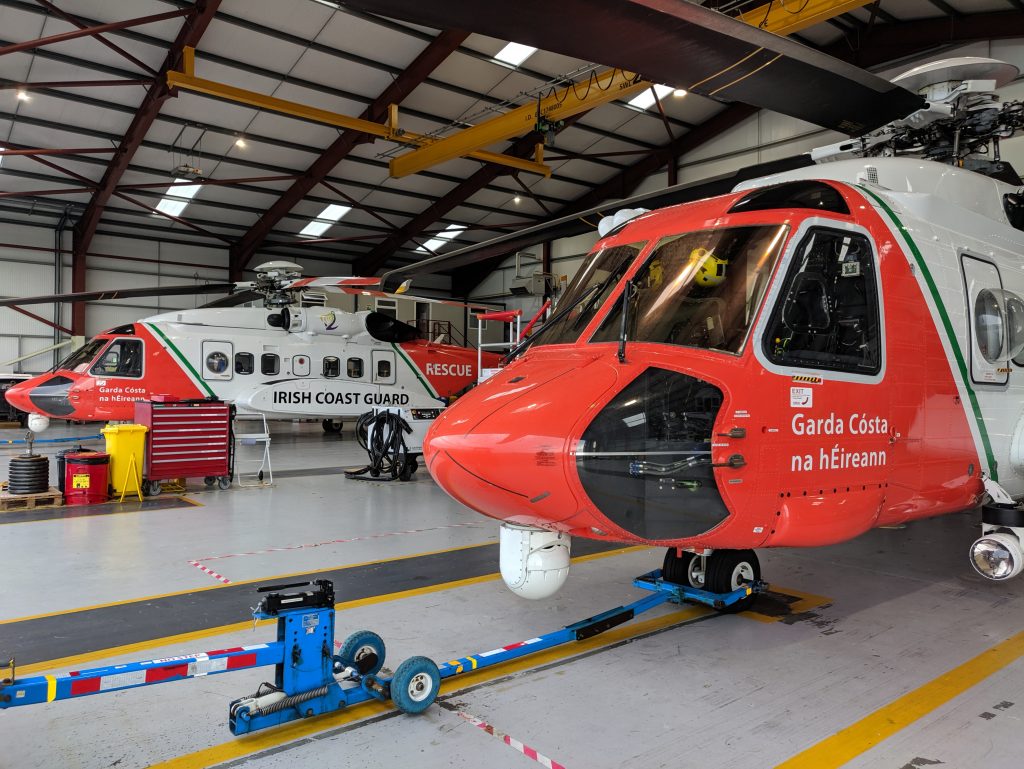
Find out more about the presenters and each episode from Season One in our notes below
Season 2 - Episode 4 - The Impact of Weather on Food Growth
When it comes to growing food, either on the farm or in our own homes, weather and climate play a deciding role in what and when we can grow, and how successful our harvest will be.
In this episode of the Met Éireann Podcast, Noel and Liz explore how different weather conditions affect the growth of plants, how can we work with the weather to help produce our crops and how might climate change influence the way we grow food.
Director and Farm manager with Keogh’s, Derek Keogh, shares his experience of how the drought of 2018 and the wet summer of 2012 impacted planting, growth and yields at Keoghs. He also shares his top tips for growing potatoes at home – including the perfect time to harvest them.
To dig a little more into the science behind how weather influences the growth of plants and crops, Dr. Michael O’Donovan, Head of Grassland Research at Teagasc, explains the essentials that plants need to grow and tells us about a world leading grass growth prediction model developed by Teagasc and used all over the country by farmers.
Finally Dr. Klara Finkele, Head of Agricultural Meteorology at Met Éireann highlights the range of weather products farmers and food growers can access to support them in making the best decisions for their crops and plants. Klara also discusses how changes in our climate may affect agriculture here in Ireland.
You can find the daily farm commentary from Met Éireann here, or tune into the weekly farming forecast on Sundays at 1.08pm on RTÉ One or on RTÉ Player.
Keep up with monthly episodes of the Met Éireann podcast by subscribing at rte.ie/podcasts or wherever you get your podcasts.
Season 2 - Episode 3 - Why Ice Matters
Our April Podcast is all about ice and its importance to society and ecosystems, how it is being lost through climate change, and why those of us who live in ice-free regions should still be concerned by this. We speak to two scientists working in the European Alps and Greenland – glaciologists Dr. Harry Zekollari and Dr. Penny How, while Liz and Noel discuss the general science (including a little on Noel’s glaciology background). The episode is based off a previous Met News article. Listen via the player above or wherever you get your podcasts.
Met Éireann Podcast Presenters - Biographies
Noel Fitzpatrick
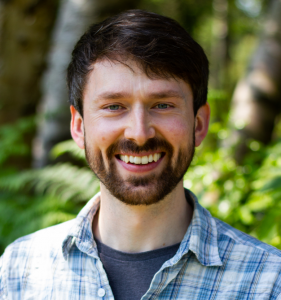 Noel Fitzpatrick is a research meteorologist with Met Éireann. He recently returned to Ireland from Canada after completing a PhD in Atmospheric Science. There, Noel carried out research on the links between weather, climate, and the loss of the planet’s snow and ice. Noel began his career in meteorology with a masters at the University of Reading before joining Met Éireann as a meteorological officer, working as an aviation weather observer and in the maintenance of the Irish weather station network. Today, Noel is involved with the development of Met Éireann’s use of satellite data and high performance computing, with the goal of improving weather and climate services into the future.
Noel Fitzpatrick is a research meteorologist with Met Éireann. He recently returned to Ireland from Canada after completing a PhD in Atmospheric Science. There, Noel carried out research on the links between weather, climate, and the loss of the planet’s snow and ice. Noel began his career in meteorology with a masters at the University of Reading before joining Met Éireann as a meteorological officer, working as an aviation weather observer and in the maintenance of the Irish weather station network. Today, Noel is involved with the development of Met Éireann’s use of satellite data and high performance computing, with the goal of improving weather and climate services into the future.
“I’m passionate about science communication, and the responsibility researchers have to clearly communicate their work to a wide audience. I’m looking forward to our first episode on climate change, and hope it answers some questions people may have!”
Liz Walsh
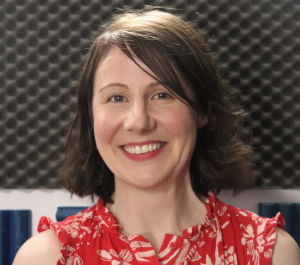 Liz Walsh is an operational forecaster at Met Éireann. She began her career as a Meteorological Officer following completion of a Masters in Meteorology at UCD in 2006. She departed for New Zealand in 2009 to work at the National Meteorological Service in Wellington, where she eventually trained and worked as a forecaster. She returned to the Northern Hemisphere in 2014 and worked as a Meteorologist for an energy company in Reading in the UK before returning to the Met Éireann fold in August 2016.
Liz Walsh is an operational forecaster at Met Éireann. She began her career as a Meteorological Officer following completion of a Masters in Meteorology at UCD in 2006. She departed for New Zealand in 2009 to work at the National Meteorological Service in Wellington, where she eventually trained and worked as a forecaster. She returned to the Northern Hemisphere in 2014 and worked as a Meteorologist for an energy company in Reading in the UK before returning to the Met Éireann fold in August 2016.
“I had the immense honour of taking part in the hurricane and warning workshop at the National Hurricane Center in Miami, Florida in February/March 2018 so I’m really looking forward to the hurricane podcast!
Ferdia McCrann
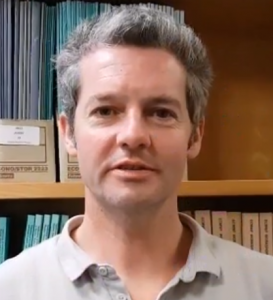 Is é Ferdia McCrann ár n-oifigeach Gaeilge. Tháinig sé go dtí Met Éireann sa bhlian 2006, tá cúlra aige san eolaíocht agus go háirithe eolaíocht ríomhaireachta agus matamaiticí. Chaith sé cheithre bhlian ag obair i réadlann Dairbhre i gcontae Chiarraí sular bhog sé go dtí an ceanncheathrú i Glasnaíon áit a bhfuil sé ina bhall den rannóg taighde. Déileálann sé le fiosruithe uaidh na meáin agus ón bpobal agus is féidir é a chloisteáil go rialta ar raidió na Gaeltachta ag freagairt ceisteanna ar gach cineál aimsir. Beidh an podchraoladh nua uaidh Met Éireann á chur i láthair aige.
Is é Ferdia McCrann ár n-oifigeach Gaeilge. Tháinig sé go dtí Met Éireann sa bhlian 2006, tá cúlra aige san eolaíocht agus go háirithe eolaíocht ríomhaireachta agus matamaiticí. Chaith sé cheithre bhlian ag obair i réadlann Dairbhre i gcontae Chiarraí sular bhog sé go dtí an ceanncheathrú i Glasnaíon áit a bhfuil sé ina bhall den rannóg taighde. Déileálann sé le fiosruithe uaidh na meáin agus ón bpobal agus is féidir é a chloisteáil go rialta ar raidió na Gaeltachta ag freagairt ceisteanna ar gach cineál aimsir. Beidh an podchraoladh nua uaidh Met Éireann á chur i láthair aige.
Series 1 Episodes 1 - 11
Fundamentals of Climate Change and Projections for Ireland
With our guest this month, Seamus Walsh – Head of Climate and Observations at Met Éireann – we bring you through the fundamentals of climate change and discuss the latest climate projections for Ireland and the world, including how temperature, rainfall, storms and sea level will all change into the future.
We explore the greenhouse effect, how it works, and how emissions of greenhouse gases such as carbon dioxide and methane contribute to changing our climate.
We talk about measuring our carbon emissions and detail the relationship between increasing carbon dioxide levels in our atmosphere and increasing temperatures. We will also answer questions on how much global temperatures will rise by the end of this century, how much sea level will increase, and how soon Arctic summers may become ice-free.
Closer to home, we discuss how climate change will affect Ireland’s weather and climate, how much our temperatures will rise, if we will get more or less rainfall, and the severity of storms that we might experience in our future climate.
This episode also features the Met Éireann choir – The Isobars – who play us out with a beautiful rendition of Samhradh Samhradh. See below for more information on The Isobars.
Podcast Notes:
In the podcast we mention the ‘Keeling curve’ which is a graphic showing carbon dioxide concentration in the atmosphere, measured since 1958.
See an image of the Keeling curve below.
Atmospheric carbon dioxide concentrations taken from the ice core record over the past 800,000 are shown here:
Note the almost vertical spike in CO2 concentrations in the past century.
Both these images were sourced from https://scripps.ucsd.edu/programs/keelingcurve/
Further reading on the topics discussed in this episode can be found on the IPCC website and via the work of Irish Climate Scientist Paul Nolan.
IPCC (The Intergovernmental Panel on Climate Change): https://www.ipcc.ch/
Paul Nolan’s Report:
Episode 2 – What Causes Ireland’s Weather
Weather has a massive impact on day-to-day life in Ireland. However, what drives the weather and climate we experience in this country? In this episode, we will be answering the question ‘What Causes Ireland’s Weather?’ with Met Éireann meteorologist and forecaster Pat Clarke.
Firstly, why do we have weather at all?
We will start with the underlying global processes and then narrow it down to Ireland.
How does the shape, rotation and axis of the earth affect our climate? What is ‘air pressure’? Why do rainforests and deserts appear in similar latitude bands around the globe? Why does Ireland often have low pressure while other areas have high pressure?
How does what’s happening in the atmosphere five to ten kilometres above our heads affect our weather at the surface? What is the jet stream and why is it stronger in the winter than the summer? What is the polar front and what side of it do we want to be on? Why do we generally get our most severe storms in the autumn and winter.
Ireland is at the same latitude as Edmonton in Canada, Alaska in the U.S. and Moscow, but why do we not have similar climate extremes? For example, Edmonton in Canada is at the same latitude as Dublin, however Edmonton’s average minimum temperature in January is -15°C while in Dublin it is +2.4°C.
How does the Atlantic Ocean moderate our climate?
What is an airmass? How does it form and how much does the airmass currently over us determine the kind of weather we can expect?
You can find out more about the weather and climate of Ireland on the ‘Climate of Ireland’ page our website.
We close out the episode with the Met Éireann choir – The Isobars – and their rendition of Raindrops Keep Falling on my Head.
Episode 3 – Hurricanes
The image above is from a flight tracking website of a hurricane hunter aircraft approaching the eye of the storm. In October 2018, all aircraft in the Gulf of Mexico were actively avoiding the intensifying Hurricane Michael. All bar one: a NOAA Hurricane Hunter. In this flight tracking image, the Hurricane Hunter has just past straight through the eye of the storm, taking essential measurements to help forecasters, and to keep people on the ground informed and safe (image from flightaware.com).
Youtube video referenced by our guest John in the podcast. It shows footage taken in the eye of the same hurricane (Michael):
Episode 4 – Chaos and Computing in Weather Forecasting
Numerical Weather Prediction (NWP) is essentially how we use computers to help forecast the weather. Today some of the most powerful super-computers in the world are dedicated to weather forecasting and climate applications. In this episode, Dr. Alan Hally from the Research Division in Met Éireann joins Liz and Noel to talk about the concepts behind using computers to forecast the weather, how accurate they have become and what the limiting factors are in terms of scale and forecast duration. Can they tell us if we will get a white Christmas this year?
In addition, what is the connection between NWP and Jurassic Park? We get an explanation from Jeff Goldblum on 25 minutes.
We also hear about Met Éireann’s ‘Harmonie Arome’ weather forecasting model and its three million lines of code, and Ireland’s international collaborations in super-computing and forecasting technology. We discuss the ‘butterfly effect’ and how chaos in the atmosphere affects our forecasts, and talk about ensemble prediction systems and how they are changing our perception and delivery of weather forecasts.
Paul Moore from our Climate Division brings us the stats for summer 2019 and we discuss how and why summer 2019 differed from summer 2018.
As always, the Met Éireann choir – The Isobars – close out the episode. This month they perform their rendition of The Swimming Song.
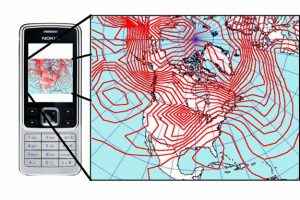
“Phoniac: The Nokia 6300 mobile phone that Peter Lynch used to run the original ENIAC forecasts on. What took ENIAC 24 hours to complete, the phone could do in about 30 milliseconds.”
Episode 5 – Valentia Observatory
The story of Valentia Observatory in Co. Kerry begins with a shipwreck in 1859. It continues with the laying of the first telegraphic cable from America to Europe, the Irish Civil War, the moving of the Observatory from Valentia Island to the mainland at Cahirciveen and the evolution of meteorology from once daily observations to continuous measurement of earth and sky.
This month Keith Lambkin – Senior Climatologist at Met Éireann – joins Liz and Noel to discuss all things geophysical and meteorological from his time as Chief Scientist at Valentia Observatory.
Paul Moore has the weather and climate stats for September, while the Met Éireann Trad band “Ceo” perform two traditional tunes “Dingle Regatta” and “The Nightingale” to close out the episode.
Episode 6 – Behind the curtain: the view from inside Met Éireann during severe weather
Storms and severe weather can impact Ireland several times a year, and ensuring the public and its services are well-informed of these events is a key role for Met Éireann. In this episode, Liz and Noel take a behind-the-scenes look at the preparations and activities taking place in Met Éireann in the build up to a potentially major weather event. They are joined in studio by this month’s guest Evelyn Cusack, Head of Forecasting in Met Éireann.
We hear how forecasters determine the likely strength, timing and location of severe weather, and learn about the natural indicators and computer-based tools that help them. We follow along with briefings from internal and international experts and hear how Met Éireann engages with the National Emergency Coordination Group. We also hear how Met Éireann communicates information and warnings regarding potentially severe weather and the importance of providing a clear and fact-based message to the public while avoiding hype.
Liz and Noel are then joined by Evelyn Cusack to talk about this year’s ‘Winter-Ready’ campaign, how to interpret our warnings, and why we name storms. To close the episode, the Met Éireann choir – The Isobars – perform a great rendition of ‘Bad Moon Rising’ with Aoife Murray conducting and accompaniment from Dónal Black.
Episode notes:
North Atlantic Oscillation (NAO) Index:
https://www.met.ie/what-are-teleconnections-and-how-do-they-influence-irelands-weather
https://www.metoffice.gov.uk/weather/learn-about/weather/atmosphere/north-atlantic-oscillation
Episode 7 – White Christmas
In the Christmas edition of the Met Éireann Podcast, Liz and Noel dig into all things snow. We hear about how often we get a white Christmas, how frequent snowfall is in general, and review some of the notable big snow events we’ve experienced in Ireland and around the world. We explore the different weather conditions that can lead to snowfall including sudden stratospheric warming, and why it can be so tricky to forecast snow in Ireland.
We often hear that all snowflakes are unique, but how do they form? Liz and Noel take us through the journey a snowflake takes from its formation to falling on the surface, and look into why they have such a distinctive shape. Finally, we learn about the role snow plays in our climate, and how the ongoing loss of snow and ice from our planet is amplifying present day climate change.
Liz and Noel are also joined by the Met Éireann choir, the Isobars, who are frequent contributors to the podcast. They tell us a little about themselves, and to close out the episode, perform a beautiful rendition of ‘White Christmas’ with Aoife Murray conducting and accompaniment from Dónal Black.
A very merry Christmas and happy New Year to all our listeners!
Episode 8 – Waves and the Science of Surfing
Located on the western edge of Europe, Ireland experiences the full impact of the Atlantic Ocean’s waves. In the first episode of 2020, Liz and Noel are joined by Met Éireann marine researcher Dr. Sarah Gallagher and surf coach and professional bodyboarder Seamus McGoldrick of Sligo Surf Experience. Together, they explore how waves form and travel, and the best ways to predict their development as a forecaster and as a surfer. We hear how local conditions such as wind, tides and seabed all influence the size and shape of a breaking wave and it’s surfing potential.
Ireland’s reputation is steadily growing as one of the World’s best surfing locations, and in this episode, we learn the reasons behind the regular arrival of large swells on these shores and the quality of Ireland’s numerous surf breaks. Searching for and riding new, powerful waves in Ireland and around the world requires extensive research and training. We hear about the preparation that goes into high-level surfing, and the physical and mental benefits that draw surfers of all abilities into the ocean.
We learn how massive amounts of energy stored in the waves of the Atlantic can reshape our coastline, toss huge boulders inland, and potentially be harnessed for producing electricity. Finally, we look at how climate change may influence Ireland’s waves and how surfers are tackling the broader environmental issues affecting our oceans.
https://www.sligosurfexperience.com/
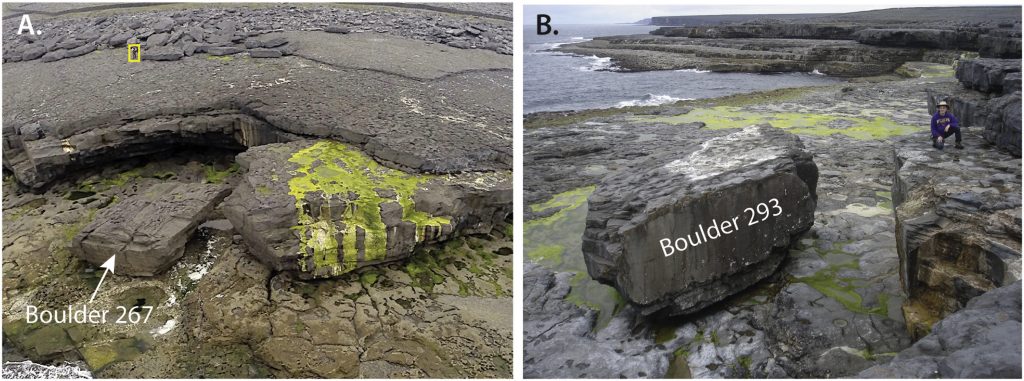
An example of the large boulders, some weighing over 600 tonnes, that were moved by large storm waves on the west coast of Ireland during the winter of 2013/2014 (Cox et al., 2018; see link to research paper below).
A Paper on boulder transport by waves on west coast of Ireland is available here.
Episode 9 – Storm Chasing
We’re heading storm chasing in this month’s episode of the Met Éireann podcast! Liz and Noel are joined by meteorologist Paul Downes as they discuss a trip last year to ‘Tornado Alley’, an infamous region in the United States with notorious severe weather.
We hear how the team spent two weeks tracking storms across the plains of Kansas, Oklahoma and several other states, looking for and avoiding hazards like lightning, damaging hail, and of course, tornados! Paul takes us through where and when these storms form, the conditions needed for such severe weather to develop, and why we rarely see major thunderstorms or tornados here in Ireland.
We also hear from experienced storm chasers, Paul and Sarah Austin, who were part of the team and have spent years chasing and studying storms in Tornado Alley. We hear about how they got started what keeps them coming back, and some of the most intense situations they’ve found themselves in.
Over the coming days, we’ll also be posting a series of pictures and videos here from the trip of some of the spectacular weather we encountered, these can also be found by following the Met Éireann Twitter, Facebook and Instagram accounts. @meteireann
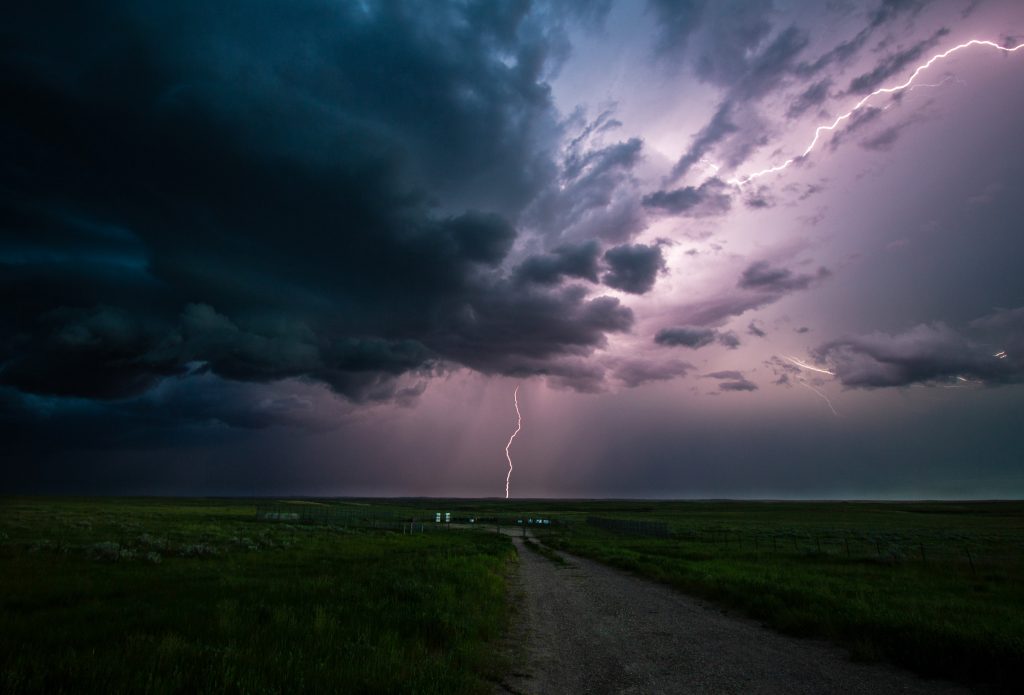
In today’s image, lightning cracks under a large thunderstorm in southeast Montana, June 2019. Pic: @fitzpatricknoel
Cars speed away from a severe, rotating thunderstorm (image 1) in Kansas. This storm was producing frequent lightning strikes (image 2), and went on to spawn a small tornado. Pics: @fitzpatricknoel
In this video our storm chase team captured images of a large supercell thunderstorm being buffeted by strong winds flowing into the storm on their trip last year in the US. In slow motion, you can see some of the components of what first looks like a single flash of lightning
These rotating thunderstorms, known as supercells, were what we searching for on our storm chasing trip in the US last year. And in this video the team reposition to stay alongside a large supercell thunderstorm in rural Kansas, June 2019 (vid: @fitzpatricknoel). This storm produced severe lightning and a small tornado.
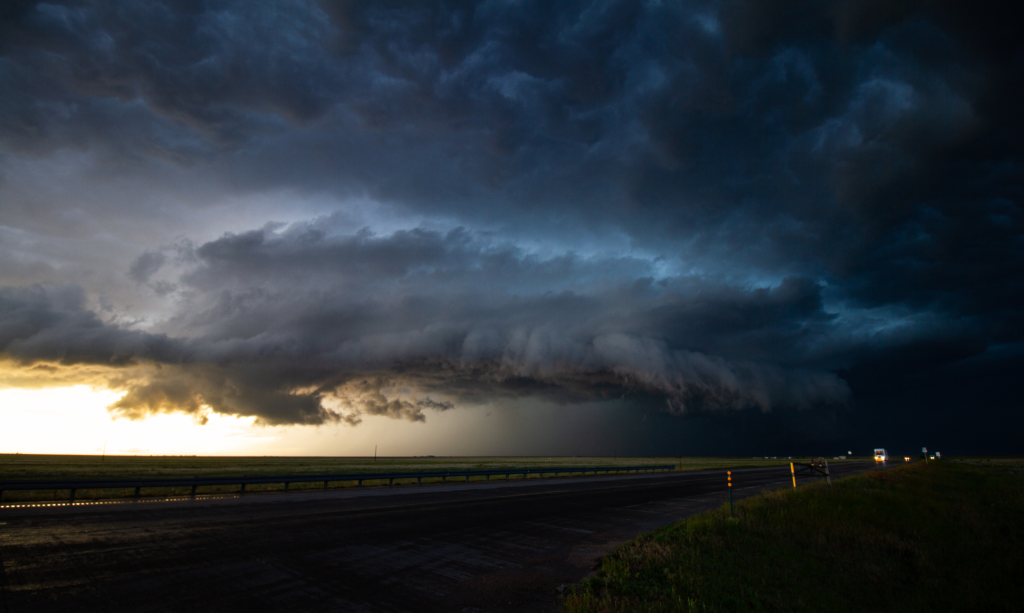
A shelf cloud under a large thunderstorm creates a dramatic sky in southern Colorado (June 2019). Pics: @fitzpatricknoel
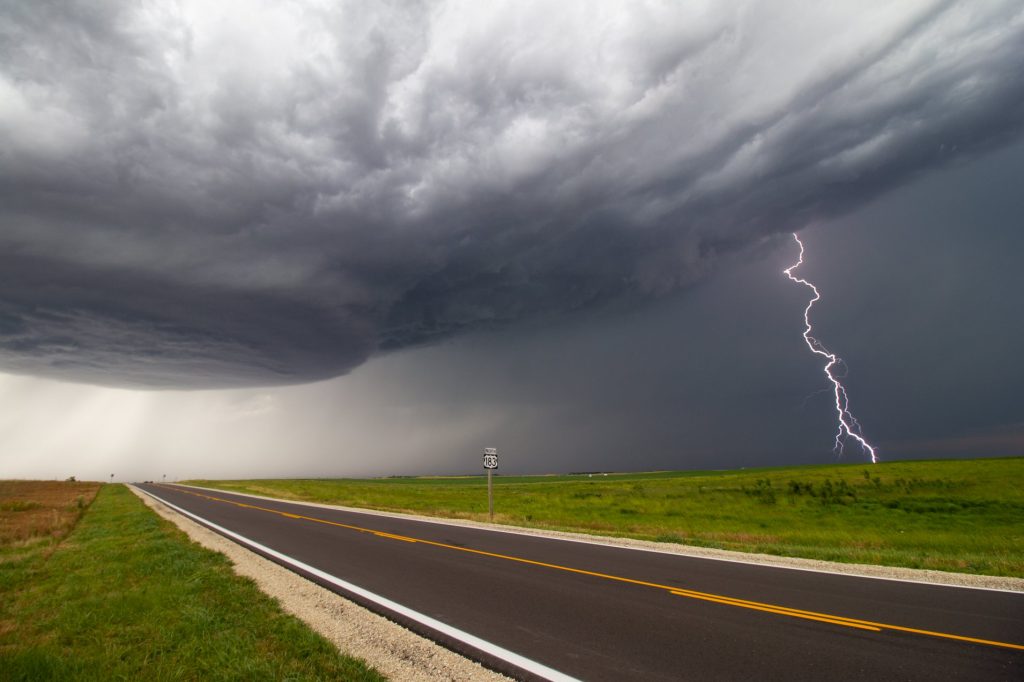
Incoming! A supercell thunderstorm crossing Highway 183 in Oklahoma, June 2019. Pic: @fitzpatricknoel
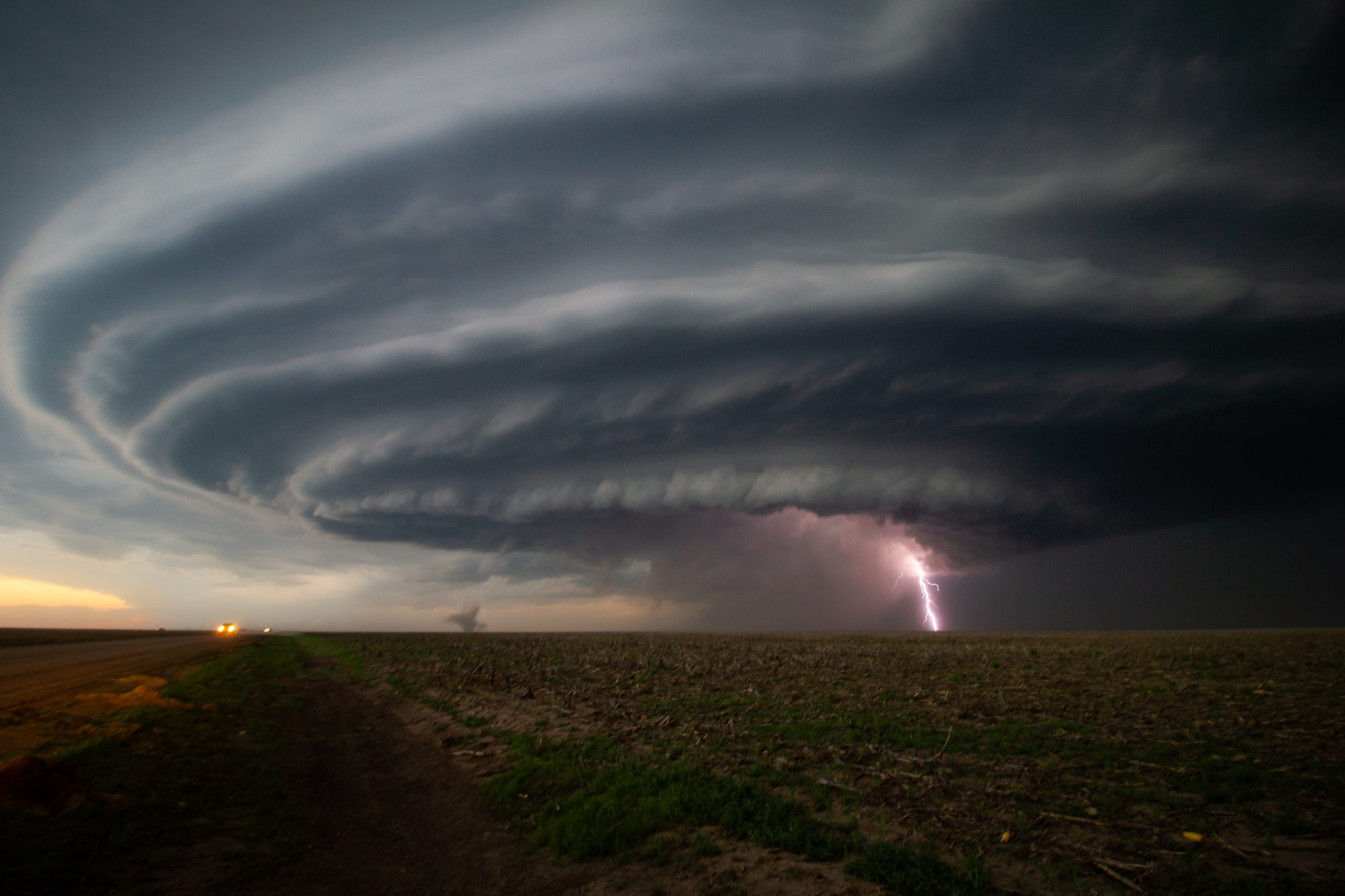
The Mothership! A large supercell thunderstorm with lightning and a small tornado over fields in Kansas, U.S.A., June 2019 (pic: @fitzpatricknoel).
This was one of the most impressive and beautiful storms the team encountered on their trip.
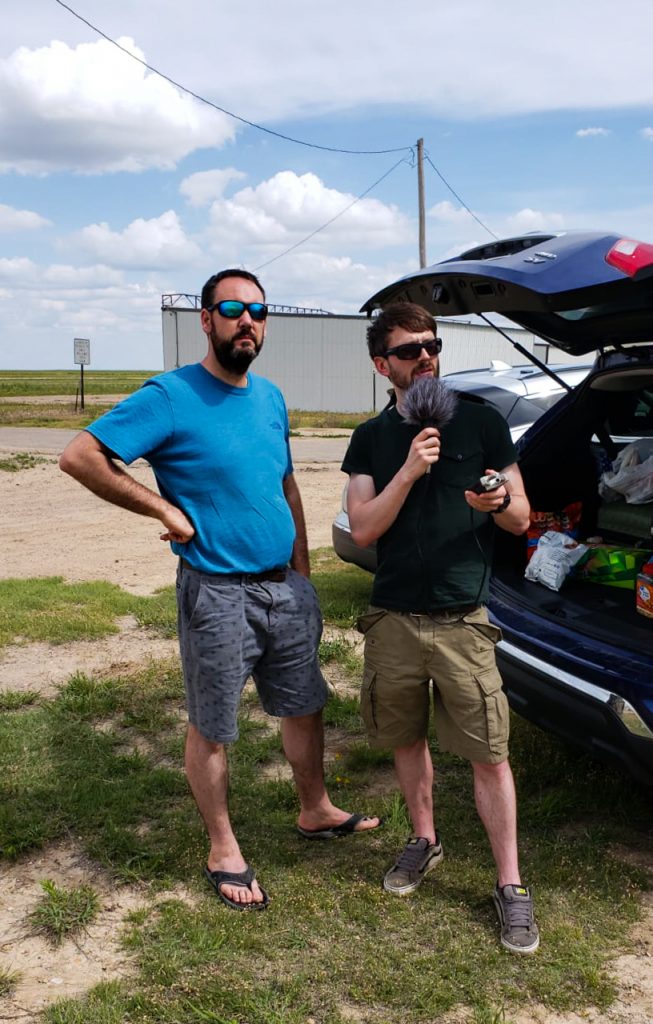
Paul Downes and Noel Fitzpatrick surveying the sky during a recording for the podcast! Pic credit: Sarah Austin
Episode 10 – Antarctica : Weather and Survival
Guest: John Law
There are few places on Earth more challenging to live than the southernmost continent, Antarctica, the world’s highest, driest, windiest, and coldest continent. In this month’s episode of the Met Éireann Podcast, Liz and Noel speak to an Antarctic meteorologist about the challenges of working in one of the most extreme locations on the planet.
In March 2020, John Law returned from a 17-month stint in Antarctica working as a meteorologist for the British Antarctic Survey. In this interview, we hear all about his time in Antarctica, the unparalleled beauty and challenges of day-to-day life in one of the world’s most remote locations, as well as the severe conditions he has encountered. John discusses some of the unique difficulties in observing and forecasting the weather at the southern end of the planet, and the lessons he’s learned from living in isolation and how they’ve influenced how he approaches this social distancing reality we are all finding ourselves in. We also hear about some of the climate change research taking place in Antarctica, and the recent record-breaking warm spell which saw temperatures rising up to 18.3°C on the continent!
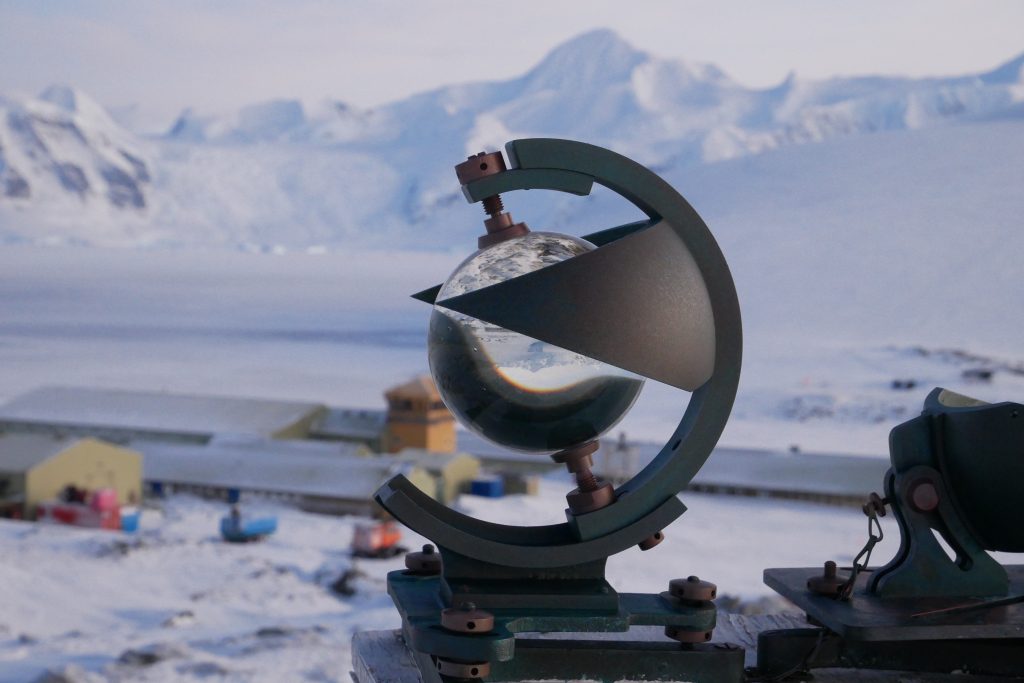
Campbell-Stokes sunshine recorder. This instrument records sunshine hours and intensity. Credit John Law
John has posted more stunning pictures of Antarctica on his Instagram page, search johnlawwx.
Episode 11 – Weather and Climate: Fact and Fiction
The desire and need to predict our weather and climate have existed for thousands of years, long before the development of modern forecasting methods and systems. As a result, a rich catalogue of proverbs and sayings have arisen over time in efforts to understand and predict the behaviour of our atmosphere. However, as stated by Richard Inwards, author of The unique bedside book of Weather Lore, “many weather proverbs contain evidence of keen observation and just reasoning, but a greater number are the offspring of the common tendency to form conclusions from a too limited observation of facts.” In this month’s episode of the Met Éireann Podcast, Liz and Noel are investigating these weather sayings to separate fact from fiction. From red skies at night to cows lying down, we hear about how these sayings may have developed and if they have a meteorological leg to stand on! The team also address some of the common myths and misconceptions when it comes to climate change, and provide the facts behind the observed warming of our planet.
Liz and Noel are then joined by Paul Moore to discuss our exceptionally dry spring, and to close out the episode, the Met Éireann choir, The Isobars, perform a fantastic version of ‘Here comes the Sun’ to help welcome in the summer!
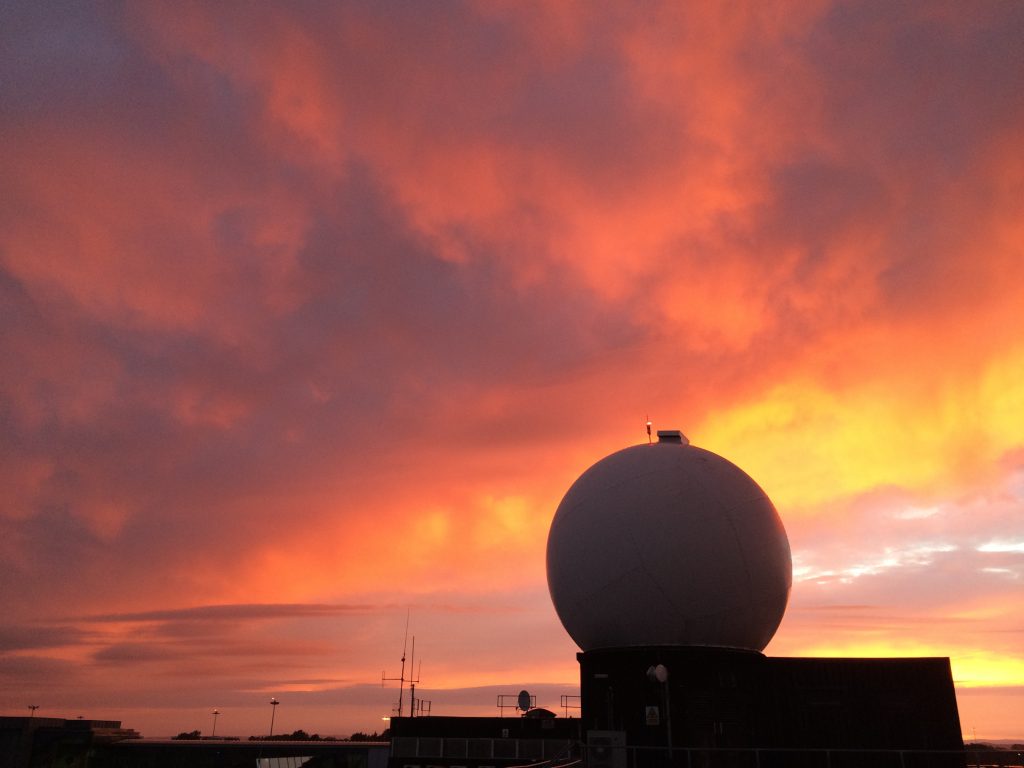
Red sky behind the Met Éireann Shannon Airport Rainfall radar. Is a red sky at night really shepherds delight? ‘When swallows fly high the weather will be dry’. Some rainfall radar systems have been used to identify the behaviour of swarms of birds and insects in certain weather conditions. These sayings and more are investigated in this episode.
The Met Éireann Choir 'The Isobars' & The Met Éireann Trad Band 'Ceo'
Met Éireann choir – The Isobars
Conducted by Aoife Murray.
Accompanied by Dónal Black on piano and Linda Hughes on violin.
The Met Éireann choir, ‘The Isobars’ was founded in early 2017 and is based at Met Éireann HQ in Glasnevin, Dublin. Serving and retired staff members have joined from all divisions in the organisation. The choir’s repertoire is comprised of mostly of weather-related songs. These went down a storm when the choir performed at the annual conference of the European Meteorological Society in 2017, at ‘The Wind the Shakes the Island’, a conference at the RDS in 2018, as well as at the Workplace Choir of the Year Competition in 2017 and 2018.
The Isobars are excited to be contributing to the new Met Éireann podcast and will play out each episode with a new song.
Sopranos: Sarah Gallagher, Sheila McGuinness, Liz Walsh
Altos: Elizabeth Coleman, Linda Hughes, Phil Stokes, Laura Zubiate
Tenors: Colm Clancy, Michael McAuliffe
Basses: Paul Downes, Matt Roberts
The Isobars sing Samhradh, Samhradh (traditional, composer unknown)
The 19th Century music collector Edward Bunting wrote that ‘Samhradh, Samhradh’ or ‘Thugamar Féin an Samhradh Linn’ “is probably extremely ancient.” It depicts a May Day tradition of carrying May dolls (bábóg na Bealtaine) through the countryside. The song is thought to have originated in the Oriel District on the Louth/Armagh border. In recent times the song has experienced a rejuvenation following a recording by The Gloaming.
Raindrops Keep Fallin’ on My Head, Burt Bacharach and Hal David
The song was composed in 1969 for the film ‘Butch Cassidy and the Sundance Kid.’ It was recorded by B.J. Thomas for the film and was subsequently released as a single, becoming the first number one of the 1970’s in the USA. It went on to win the Academy Award for Best Original song. The beautiful melody and upbeat lyrics made the song stand out against its contemporaries at the time, which included the more heavy-sounding ‘Whole Lotta Love’ by Led Zepplin and ‘Come Together’ by the Beatles.
Lá Ghaofar’ (Windy Day)
An original piece of music by the ‘Met Éireann Trad Band’. Original composition by Dónal Black. Ceo is the Irish translation for fog.
Performed by the ‘Met Éireann Trad Band’:
Dónal Black – Mandolin
Linda Hughes – Fiddle
Sarah Gallagher – Low Whistle
Colm Clancy – Banjo
Dingle Regatta Nightingale – Performed by ‘Ceo’ The Met Éireann Trad Band
Dingle Regatta Nightingale is a piece of traditional music played by the Met Éireann Trad Band – ‘Ceo’ and features at the end of the Valentia Observatory podcast
Recorded September 2019
